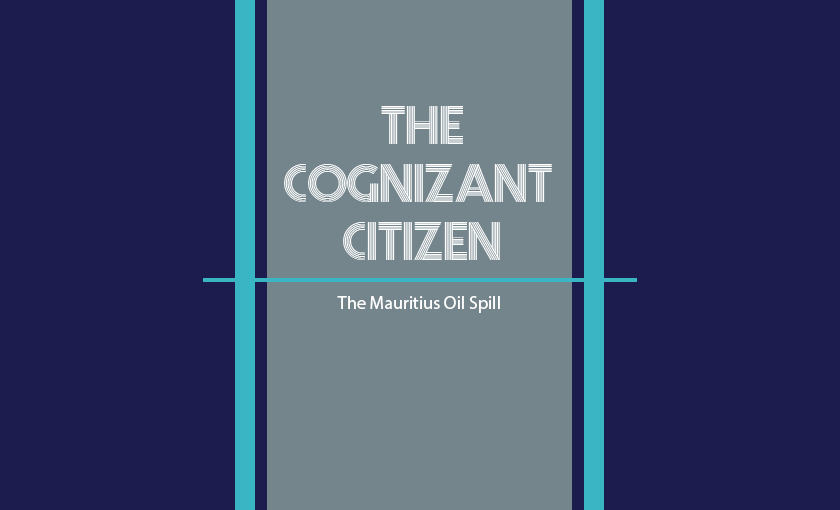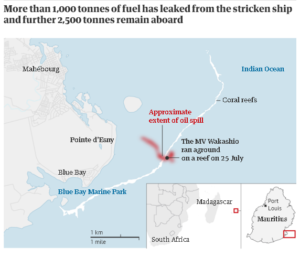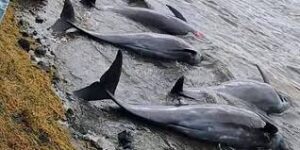
A series of catastrophic events took place in Mauritius on July 25, 2020, when a Japanese ship, MV Wakashio, struck a coral reef and eventually began leaking oil into the Indian Ocean, leading to the declaration of a state environmental emergency by the Mauritian Government. Now, this incident has become one of the worst environmental disasters ever to occur on the island.
The vessel, owned by Nagashiki Shipping and operated by Mitsui OSK Lines Ltd, contained approximately 3,894 tons of fuel oil, 207 tons of diesel, and 90 tons of lubricant oil. This bulk carrier was travelling from Brazil to China when it went off course and grounded on the coral reef. Initially, up till the 5th August, there were signs of cracks on the hull due to rough weather conditions, but the oil spill began shortly after. The spill took place near Blue Bay Marine Park Reserve and two internationally preserved wetland sites that are rich in rare biodiversity and a tourist destination.
The Damage Caused
The Mauritian government initiated the National Oil Spill contingency plan for damage control as the disaster can cause permanent damage to the already fragile coastal ecosystem. By 11th August, the ship had spilt over 1000 tonnes of oil into the Indian Ocean, extensively staining the previously pristine waters and endangering the already environmentally sensitive area. Since the spill began, the oil spread has grown over eight times, confirmed by the satellite imagery. The tourism-dependent economy of Mauritius, already affected due to the coronavirus outbreak, now stands heavily battered.
The vessel split in two on 15th August, but by then, about 3000 tonnes of oil had been recovered from the vehicle. This has become one of the most damaging disasters, both environmentally and economically, for a country that earns primarily off tourism and is one of the top global destination islands. The communications co-ordinator Tal Harris said, “We know this disaster will have significant effects on biodiversity in Mauritius.”
Lifeless bodies of marine animals have washed up on Mauritian shores for the past five weeks since the initial stages of the incident. By Friday, 29th August, 39 dolphins and Melon-headed whales had washed up on beaches, and videos taken by several local journalists around the lagoons revealed that many more dolphins and whales were distressed. Vassen Kauppaymuthoo, an oceanographer, said, “It’s devastating, and these deaths are only the beginning.“
Local and International help
Several countries, including France and Japan, sent specialist teams and equipment to help with the cleanup effort. International bodies such as the United Nations Development Program (UNDP) Mauritius and the International Tanker Owners Pollution Federation (ITOPF) are working alongside the Mauritius authorities to prevent further damage to the environment.
Thousands of locals ignored official instructions and volunteered to improvise floating barriers made from straw to hold back the oil. Campaigners for the cause believe that the current efforts are not enough and have asked for a full-scale international effort to salvage the coral reef and the surrounding areas. The fact that it is a new type of low-sulfur fuel whose ecological effects have not been well studied only worsens the situation.
The Impact of Oil Spills
Every oil spill documented has vivid images of birds stuck with an oil coating all over their feathers. This compromises their natural insulation, waterproofing which makes it almost impossible to fly. It also increases the risk of hypothermia or overheating. Since preening the oil off come with a high possibility of the bird swallowing the oil leading to severe organ damage, many biologists including Sylvia Gaust believe that killing oil-soaked birds is kinder than cleaning them. In addition, the migration patterns and nesting grounds could get contaminated, causing irreparable damage to the birds’ life-cycle.
The oil can also block the blowholes of animals such as dolphins and whales, causing difficulty in breathing, and disrupting their communication through echolocation. These spills can disrupt the ecological system, poison farming land, and even destroy a significant link in the food chain. For a long time, it was believed that the substantial damage in oil spills happened during the first few weeks and that after a year or so, everything would look just the way it previously did, and all the birds and fish would likely be rebounded. This is partly true, as some of the oil simply goes underground and remains hidden in pockets where it can cause low-level damage to wildlife over the course of years. Scientists have also observed that some spills have very low persistence, which makes them undetectable by routine checks, although the lasting impacts, such as severe erosion of the shoreline, take longer to surface.
Reports of the ship passing the annual inspection have surfaced online, making one wonder about the laws and protocols surrounding them. Incidents like these emphasise the importance of having robust global maritime laws, especially to protect the interests of small island states who face a potential existential and development crisis every time an oil spill occurs. Under the Bunker Convention, a maximum compensation of about $65.17 million is permitted under the circumstances. It will be four times more if the International Oil Pollution Compensation Funds regime is followed. The reality is that no amount of money can compensate for the irreparable environmental and humanitarian damage whose effects will last for generations.
Written by Anwesha Bhattacharjee and Cynthia Maria Dsouza for MTTN
Edited by Radhika Taneja for MTTN
Feature image by Arvin Das for MTTN
Image sources: insider.com and theguardian.com


Leave a Reply
You must be logged in to post a comment.